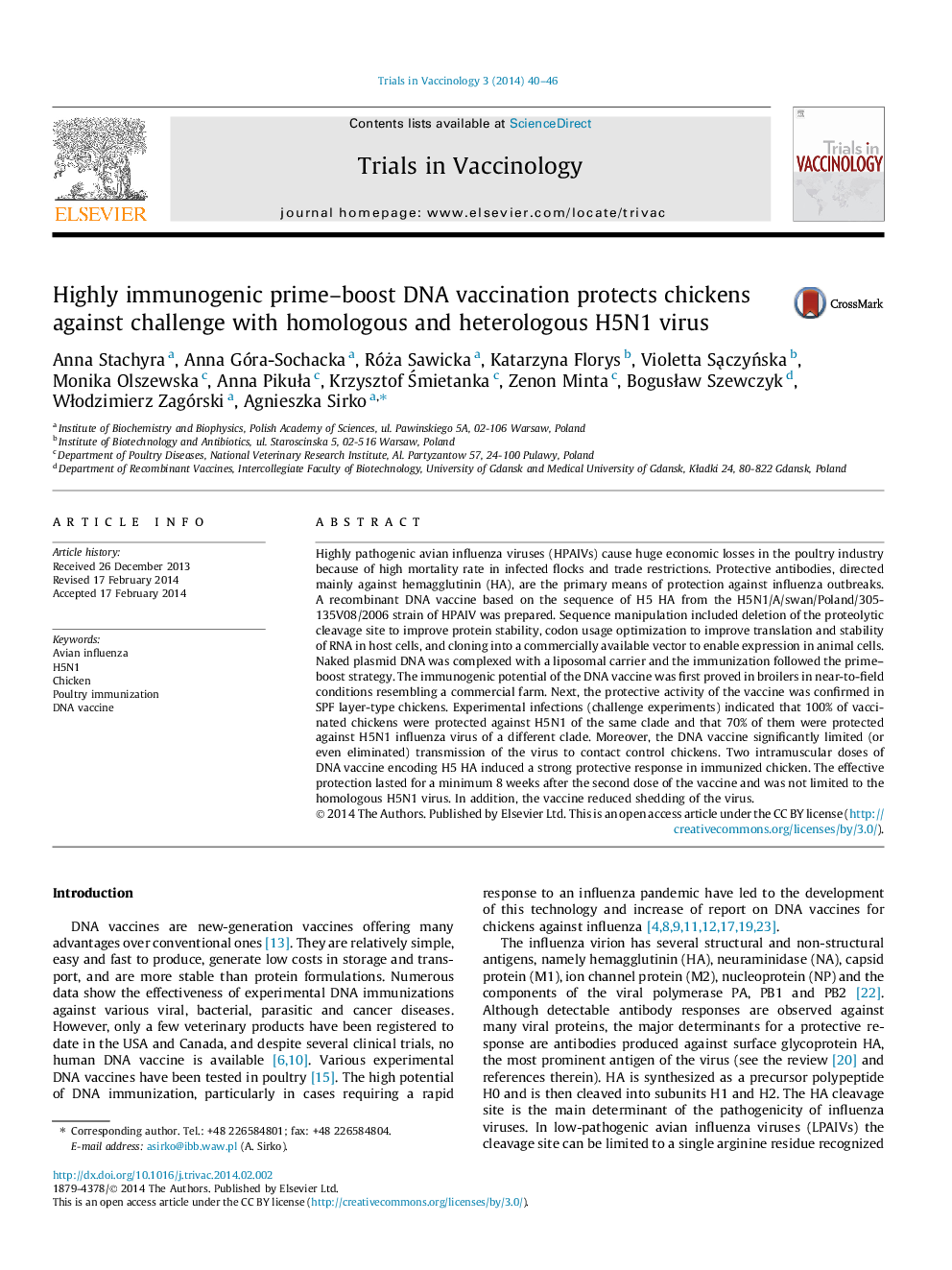| Article ID | Journal | Published Year | Pages | File Type |
|---|---|---|---|---|
| 2474404 | Trials in Vaccinology | 2014 | 7 Pages |
Highly pathogenic avian influenza viruses (HPAIVs) cause huge economic losses in the poultry industry because of high mortality rate in infected flocks and trade restrictions. Protective antibodies, directed mainly against hemagglutinin (HA), are the primary means of protection against influenza outbreaks. A recombinant DNA vaccine based on the sequence of H5 HA from the H5N1/A/swan/Poland/305-135V08/2006 strain of HPAIV was prepared. Sequence manipulation included deletion of the proteolytic cleavage site to improve protein stability, codon usage optimization to improve translation and stability of RNA in host cells, and cloning into a commercially available vector to enable expression in animal cells. Naked plasmid DNA was complexed with a liposomal carrier and the immunization followed the prime–boost strategy. The immunogenic potential of the DNA vaccine was first proved in broilers in near-to-field conditions resembling a commercial farm. Next, the protective activity of the vaccine was confirmed in SPF layer-type chickens. Experimental infections (challenge experiments) indicated that 100% of vaccinated chickens were protected against H5N1 of the same clade and that 70% of them were protected against H5N1 influenza virus of a different clade. Moreover, the DNA vaccine significantly limited (or even eliminated) transmission of the virus to contact control chickens. Two intramuscular doses of DNA vaccine encoding H5 HA induced a strong protective response in immunized chicken. The effective protection lasted for a minimum 8 weeks after the second dose of the vaccine and was not limited to the homologous H5N1 virus. In addition, the vaccine reduced shedding of the virus.
